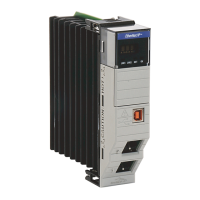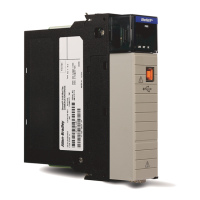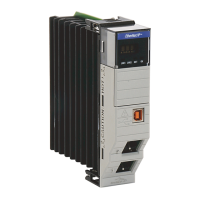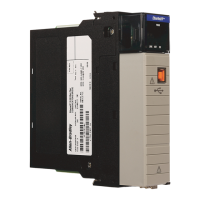Rockwell Automation Publication 1756-UM004D-EN-P - August 2022 27
Chapter 3
Connect Redundant EtherNet/IP Adapters
Redundant 1756-EN4TR adapters can be used for added resiliency at the
adapter level. One adapter acts as the primary and controls the I/O, while the
other adapter acts as a secondary and can take over as the primary if needed.
Redundant Adapter functionality is available starting in revision 3.001
firmware.
Redundant Design
Considerations
There are some details and rules to consider with redundant design
considerations in the following list.
• Do not exceed 80% of the maximum allowed packet rate capacity
(max: 50,000 pps).
• Only I/O modules are supported in the redundant adapter chassis. The
redundant chassis does not support the following.
-motion modules
- communication modules such as DHRIO and DeviceNet®
- controllers
• Redundant adapters must reside in slots 0 and 1 only.
• The fourth rotary switch on the redundant 1756-EN4TR adapter must be
set to number 7 for a redundant adapter with DLR, or 6 for a redundant
adapter with PRP. Note that PRP is available starting with firmware
revision 4.001.
Topic Page
Redundant Design Considerations 27
Redundant System Components 28
Redundant Switchovers 28
Configure a 1756-EN4TR Redundant Adapter Pair 30
Redundant Architecture 35
Redundant Architecture Network Considerations 37
PRP Architecture with RedBox Switches 39
PRP Architecture without RedBox Switches 40
ATTENTION: For redundant adapter functionality, two 1756-EN4TR adapters
must have configurations that match, including IP addresses and rotary
switches, in both slot 0 and 1.
If you are using one 1756-EN4TR adapter, it functions as one adapter.
If a redundant adapter is in slot 0 or slot 1, then both of those slots must
contain a redundant adapter. No other types of modules can be part of the
pair.

